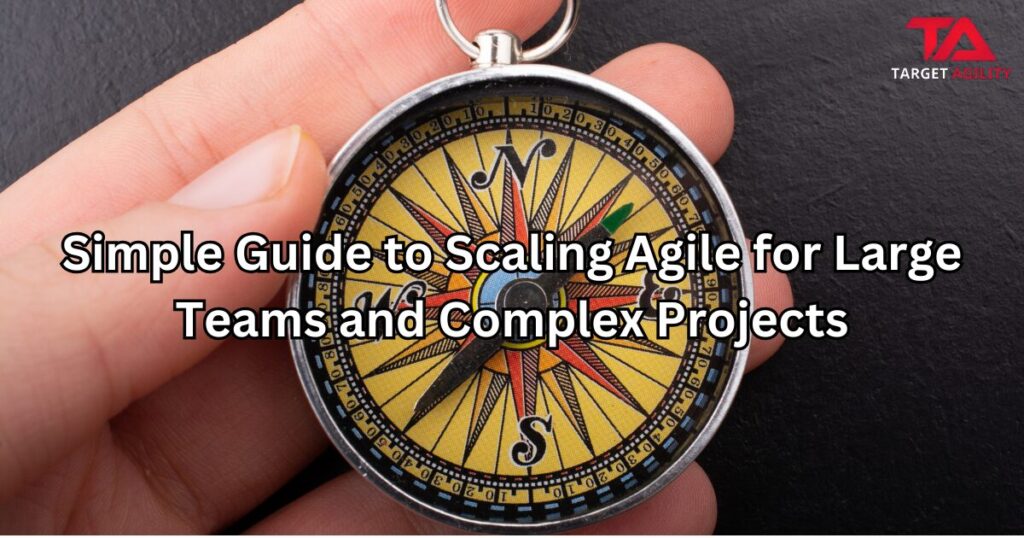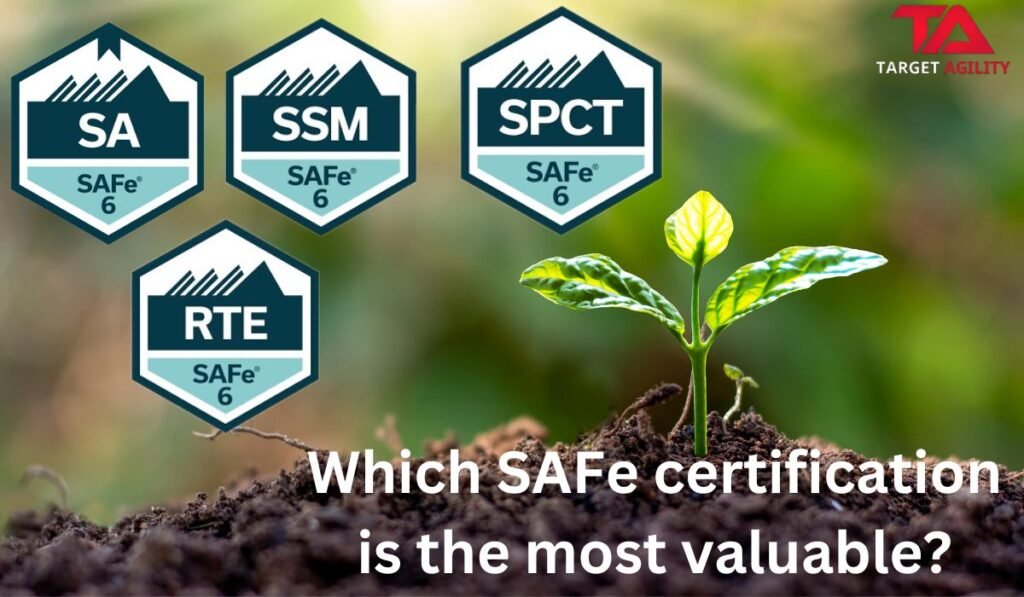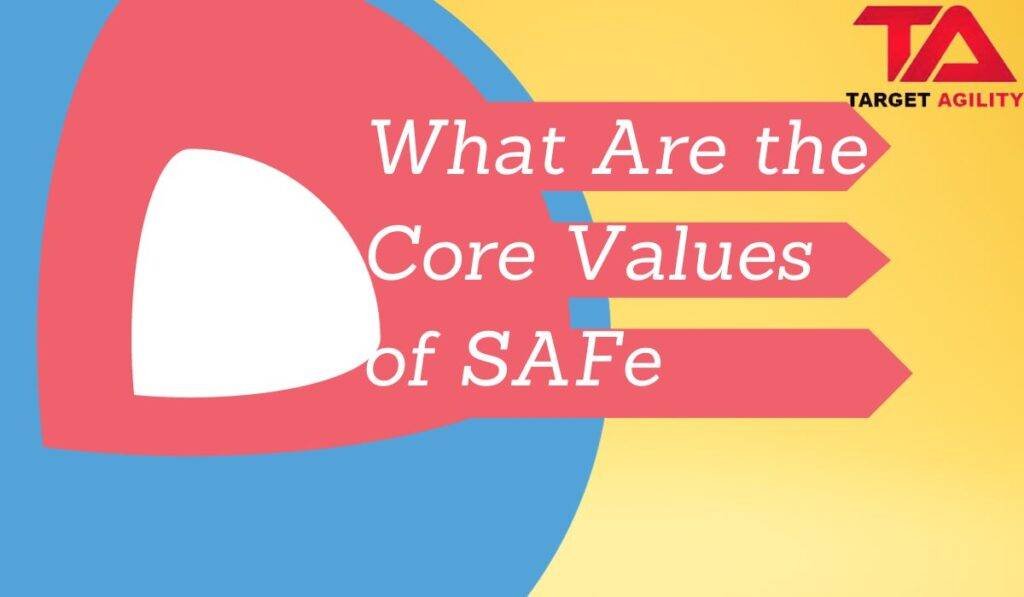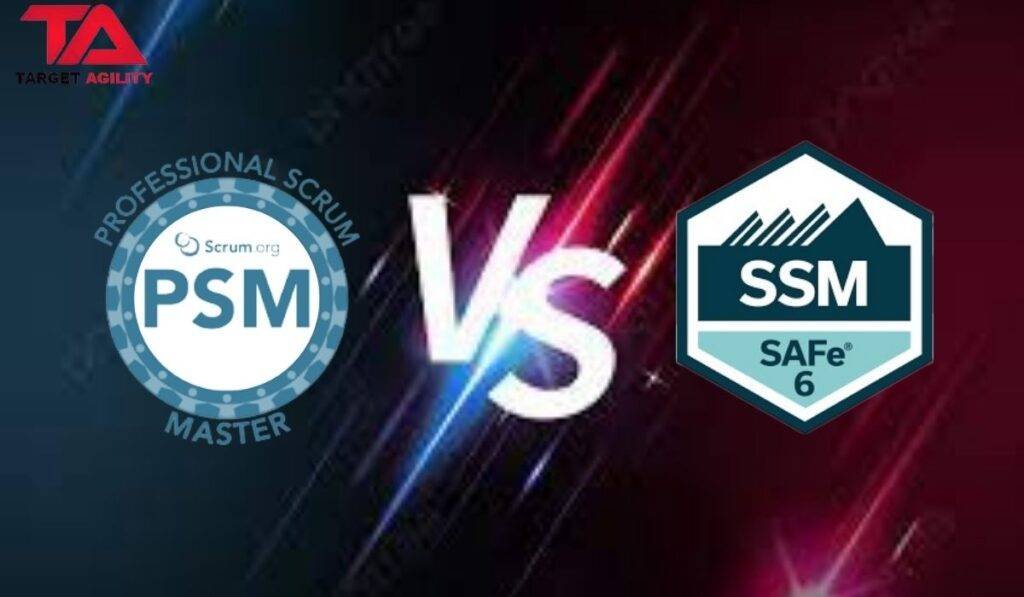Simple Guide to Scaling Agile for Large Teams and Complex Projects

As companies grow and handle bigger projects, scaling Agile becomes essential. While Agile works great for small teams, larger organizations face challenges in staying coordinated, aligned, and productive. Frameworks like Scrum of Scrums help multiple teams work together while staying aligned with company goals. Let’s explore key strategies and benefits of scaling Agile practices. Why Scale Agile Practices? Agile was designed for small teams, but as projects and organizations grow, challenges arise. Some common challenges include: Scaling frameworks help overcome these challenges by improving communication and aligning goals. Popular Frameworks for Scaling Agile There are several ways to scale Agile effectively. Here are three popular frameworks: 1. Scrum of Scrums (SoS) Scrum of Scrums extends the traditional Scrum framework to coordinate multiple teams. Key Features: How It Works: 2. SAFe (Scaled Agile Framework) SAFe provides a structured way to scale Agile across large companies. Key Features: 3. LeSS (Large-Scale Scrum) LeSS keeps Scrum simple while applying it to bigger teams. Key Features: Benefits of Scaling Agile Scaling Agile offers many benefits for organizations: Best Practices for Scaling Agile To successfully scale Agile, follow these best practices: Conclusion Scaling Agile frameworks like Scrum of Scrums, SAFe, and LeSS help organizations stay flexible and efficient, even as they grow. By focusing on collaboration, goal alignment, and best practices, companies can navigate the challenges of scaling Agile and achieve long-term success.
Why Emotional Intelligence is Essential for Agile Leaders

In today’s fast-changing world, agile leaders play a key role in helping teams adapt, innovate, and succeed. While technical skills and strategic thinking are important, emotional intelligence (EI) is what truly sets great agile leaders apart. EI helps leaders understand and manage emotions—their own and others’—to build strong relationships and create positive team environments. What is Emotional Intelligence? Emotional intelligence, or EQ, is the ability to recognize and control emotions and handle relationships effectively. It includes five main skills: self-awareness, self-control, motivation, empathy, and good social skills. These abilities align perfectly with agile leadership, where collaboration, adaptability, and communication are essential. Why Agile Leaders Need Emotional Intelligence 1. Building Trust and Safe Spaces Trust is critical in agile teams. When team members feel safe to share ideas or voice concerns, they work better together. Leaders with emotional intelligence create this trust by being self-aware of their actions and empathetic to others’ feelings. This makes team members feel valued, encouraging creativity and teamwork. When people trust their leader, they’re more open to trying new things without fear of failure. 2. Handling Change and Uncertainty Agile environments are full of change. Leaders with strong EI stay calm and focused during uncertainty, thanks to their ability to regulate their emotions. They also understand their team’s concerns and provide encouragement, helping everyone stay positive and focused on solutions. This stability allows teams to adapt and overcome challenges more effectively. 3. Improving Team Collaboration Collaboration is at the heart of agility, and emotionally intelligent leaders excel at bringing people together. With strong communication and conflict resolution skills, they ensure teams work in harmony. By listening to everyone and valuing different viewpoints, these leaders create an inclusive environment where every voice matters. This boosts creativity and leads to better ideas and solutions. 4. Encouraging Feedback and Growth Continuous improvement is a key part of agile practices, and feedback is vital for growth. Leaders with high emotional intelligence know how to give feedback in a constructive and motivating way. Self-awareness helps them avoid being overly critical, while empathy ensures they deliver feedback thoughtfully. This approach makes team members more open to learning and improving, benefiting the entire team. 5. Boosting Motivation and Engagement Engaged and motivated teams perform better. Agile leaders with strong EI know what drives their team members and help connect their goals with the organization’s vision. By showing empathy and communicating clearly, they create a sense of purpose and excitement about the work. This not only improves productivity but also makes the workplace more enjoyable for everyone. How to Build Emotional Intelligence The good news is that emotional intelligence can be learned and developed. Here are some ways agile leaders can improve their EI: Conclusion Emotional intelligence is a must-have skill for agile leaders. It helps them build trust, handle change, and foster collaboration, creating a strong foundation for team success. By improving their EI, leaders can create positive environments where teams thrive, adapt, and achieve great results together.
What is Scrum? A Simple Guide for Beginners

Scrum is a popular way for teams to work together on projects, especially when things can get complicated. Originally created for software development, it’s now used in many fields like marketing, design, and even construction. Scrum helps teams work faster, stay organized, and deliver results step by step. The name “Scrum” comes from rugby, where players huddle together to move the ball forward. In the same way, Scrum teams collaborate closely to reach their goals. How Does Scrum Work? Scrum breaks big projects into smaller tasks that can be done in short periods of time, called Sprints. This helps teams stay focused and adjust quickly when things change. Key Ideas of Scrum Scrum Roles: Who Does What? Scrum Tools (Artifacts) Scrum Meetings (Events) Why Use Scrum? Conclusion Scrum is a simple yet powerful way for teams to work together, especially on complex projects. By breaking work into smaller chunks, staying in constant communication, and adapting when needed, teams can deliver better results faster. Whether you’re in software, marketing, or any other industry, Scrum can help your team stay organized and successful.
Essential Skills Every Scrum Master Needs

A Scrum Master plays a key role in helping teams work well within Agile practices, especially when using Scrum. They’re not just in charge of meetings but support the whole team and organization to follow Agile principles effectively. Here are the main skills a good Scrum Master needs. 1. Facilitation and Communication Skills A Scrum Master runs meetings like sprint planning, daily stand-ups, sprint reviews, and retrospectives. They make sure these meetings are focused, organized, and productive. This means they need to guide discussions and encourage everyone to participate. Communication is essential because the Scrum Master acts as a bridge between the development team, the Product Owner, and other stakeholders. They should explain things clearly, avoid jargon, and ensure everyone is working toward the same goals. 2. Coaching and Mentoring A big part of the Scrum Master’s job is to coach and support the team. They help team members understand and use Agile principles, encouraging them to take charge of their work. Rather than giving answers directly, they guide the team with questions, helping them find solutions themselves. This approach builds a culture of learning and growth, which is important for Agile teams. 3. Conflict Resolution and Negotiation Conflicts happen in any team, and a Scrum Master should know how to resolve them positively. Whether it’s disagreements over priorities, resources, or personal differences, they need to manage conflicts calmly and fairly. This involves listening actively, showing patience, and having a problem-solving attitude. Scrum Masters also act as neutral helpers, allowing team members to express their concerns and work toward a solution together, keeping the team unified. 4. Servant Leadership Being a Scrum Master is about servant leadership—empowering the team rather than managing or controlling them. They focus on supporting the team by removing roadblocks and helping them work smoothly. A servant leader puts the team’s needs first, builds trust, and creates a safe environment. They protect the team from distractions so they can stay focused on delivering results for the customer. 5. Knowledge of Agile and Scrum While people skills are crucial, a Scrum Master also needs a solid understanding of Agile principles and the Scrum framework. They should know what each part of Scrum is for, like the product backlog, sprint backlog, and increment, and how to manage these effectively. They should be comfortable using tools like story mapping and tracking velocity to help the team make decisions. They should also adjust these practices to fit the unique needs of the team and organization. 6. Adaptability and a Focus on Improvement Adaptability is key in Agile environments. A good Scrum Master is open to change and always looking for ways to improve. They should keep learning, stay updated on new Agile ideas, and refine their own approach. By being adaptable and showing a commitment to improvement, they encourage the team to stay flexible and improve over time. In short, a Scrum Master needs a blend of skills: good communication, conflict resolution, a deep understanding of Agile and Scrum, and a focus on serving the team. By mastering these skills, Scrum Masters can help the team work together effectively, deliver quality results, and create real value for the organization and its customers.
8 Simple Ways to Make Your Daily Scrum Fun and Engaging

Daily Scrums can sometimes feel repetitive and lose their energy, making it hard for team members to stay engaged. But with a few changes, you can make these meetings something people look forward to. Here’s how to add some fun, variety, and value to your Daily Scrum: 1. Switch Up the Setting and Style If you’re always meeting in the same spot, try switching it up! Change locations, try a virtual background, or even go outside. For a fresh twist, do a “walking stand-up” where everyone moves around as they talk. Changing the environment or style brings new energy and keeps things from feeling stale. 2. Rotate the Leader Having the same person (often the Scrum Master) lead each time can get repetitive. Let team members take turns leading the Scrum. This keeps things fresh and gives everyone a sense of ownership. Plus, different leaders bring different styles and ideas, making each meeting unique. 3. Add Themes or Daily Focuses Make each day special by giving it a theme or focus. For example, Mondays could be “Problem-Solving Day,” where team members share any obstacles they’re facing. Tuesdays could be “Takeaway Day,” where each person shares a lesson learned. These small changes can help the team look forward to each day’s Scrum with new purpose. 4. Share Small Personal Updates Start each meeting with a quick personal update or a positive note from each person. A quick check-in or “what’s one small win you’ve had recently?” helps team members connect on a personal level. This brings a human touch to the meeting and strengthens team bonds. 5. Use Visuals and Stories Try using visual tools like Kanban boards, project timelines, or virtual boards to make updates more engaging. Team members can walk the group through visuals to show progress. Even better, have them frame their updates like a mini-story, starting with what they tackled yesterday and what they’re taking on today. This keeps the meeting engaging and clear. 6. Set Time Limits and Gamify To keep the meeting moving, set a timer for each person’s update. This encourages everyone to keep it brief and focused. You could also gamify it: award points when the meeting finishes on time, and celebrate with a team reward when you reach a set goal. 7. Focus on Problems, Not Just Status If the Scrum is just a checklist of what everyone did, people can lose interest. Encourage team members to share any blockers they’re facing, and have the group brainstorm quick ideas to help. If a longer discussion is needed, decide who will meet later to solve it. This keeps the Scrum focused on solving real issues rather than just giving updates. 8. Celebrate Wins and Boost Team Morale Wrap up the meeting by celebrating small wins. This can be as simple as giving kudos to someone who overcame a challenge or reached a milestone. Small celebrations create a positive atmosphere and keep everyone motivated. These simple changes can make your Daily Scrums more enjoyable, focused, and valuable. By keeping things fresh and centered on collaboration, you’ll help your team look forward to each day’s work with renewed energy.
How to Make Daily Scrum Meetings More Interesting

Daily Scrum meetings are essential in Agile project management, helping teams stay on the same page, share updates, and adjust plans when needed. However, these meetings can sometimes become boring or feel repetitive. When this happens, people might lose focus, and the meeting may not provide as much value. So, how can we make daily Scrums more engaging and enjoyable? Here are some simple tips to keep your daily Scrum meetings interesting and productive: 1. Keep It Short and Focused A daily Scrum should be quick and to the point—no more than 15 minutes. If it regularly takes longer, it’s likely losing the team’s attention. Stick to the core questions:What did you do yesterday? What will you do today? Do you have any blockers? Encourage brief updates and avoid lengthy discussions. Keeping the meeting short and focused ensures it remains energizing, not tiring. 2. Mix Up the Meeting Format Doing the same thing every day can get boring. Try changing how you run the meeting now and then. Changing the routine makes the meeting less predictable and keeps the team engaged. 3. Use Visual Tools Using visuals during Scrum can make the meeting more dynamic. If you’re working with digital tools like Jira, Trello, or Asana, display them on a screen and walk through the tasks. Visual aids help clarify what’s being discussed and keep everyone interested. For virtual teams, try using fun virtual backgrounds or team avatars to create a more interactive experience. 4. Celebrate Small Wins While Scrum is mostly about tracking progress and solving problems, don’t forget to celebrate achievements, no matter how small. Whether it’s finishing a task or overcoming a challenge, take a moment to recognize these wins. A simple acknowledgment or quick round of applause can lift the team’s spirits and make the meeting more enjoyable. 5. Rotate the Scrum Master Role Let different team members take turns leading the Scrum. This brings fresh perspectives and energy to the meeting. Each person might have a different style of running the meeting, which keeps things from getting stale. It also promotes a sense of shared responsibility within the team. 6. Tackle Blockers Effectively Blockers (things stopping progress) are a key part of Scrum. However, if the same blockers come up day after day without any resolution, it can frustrate the team. Make sure blockers are addressed quickly, either in the meeting or right after. This shows the team that the Scrum is a useful tool for solving problems, not just a daily task to check off. 7. Add Some Fun A little fun can go a long way in making Scrum more enjoyable. Here are some simple ideas: 8. Encourage Team Interaction Scrum shouldn’t just be about giving updates to the Scrum master. Encourage team members to talk to each other, offer help, or brainstorm ideas together during the meeting. This makes the Scrum more about teamwork and collaboration, rather than just individual status reports. Conclusion Making daily Scrum meetings interesting doesn’t require big changes. By keeping them short, using visuals, rotating roles, and adding a bit of fun, you can create a meeting that your team looks forward to. Scrum is meant to be valuable and productive, and with these small adjustments, you can make sure it benefits everyone involved.
How OTT Platforms Use Agile Methods to Deliver Better User Experiences

Over-The-Top (OTT) platforms like Netflix, Amazon Prime, and Disney+ have changed how we watch TV shows and movies. To keep their users happy, they need to keep up with changes in technology and what viewers want. One of the best ways to do this is by using Agile methods. Agile is an approach that helps teams work faster, be flexible, and make improvements quickly. What is Agile? Agile is a way of working that focuses on breaking big tasks into smaller, manageable parts. Teams work on these small parts in short time periods called “sprints.” After each sprint, they review their work and make changes if needed. Agile allows teams to adapt to changes quickly and improve their work continuously. For OTT platforms, this means they can respond to feedback, try new ideas, and improve the user experience regularly. How Agile Helps OTT Platforms Improve User Experience OTT platforms have to keep adding new features to stay competitive. Whether it’s improving the way users find content or fixing bugs, platforms need to work quickly. Agile allows teams to release updates in small steps, so users get new features more frequently. For example, Netflix might update how it recommends shows to users or make the interface easier to use. With Agile, they can test these changes quickly, get feedback, and make improvements without waiting too long. Agile encourages platforms to involve users in the development process. Instead of making big changes all at once, they can introduce small updates based on real user feedback. OTT platforms often test new features with a small group of users first. They gather feedback, make improvements, and roll out the changes to everyone. This way, they ensure that new updates are based on what users actually need, making the experience more personalized and user-friendly. OTT platforms use data to personalize what you see. Agile helps them experiment with how they recommend shows and movies to users. Teams can gather data, test different approaches, and see which one works best. For instance, Netflix can analyze viewing habits and adjust its recommendation system using Agile methods. This way, it continuously improves how well the platform matches users with content they’ll enjoy. Agile encourages collaboration between different teams, such as designers, developers, and marketing. Each team brings its expertise to the table, ensuring that all aspects of the platform are covered. For example, one team might focus on improving video quality, while another works on the user interface. Agile practices help them stay connected and adjust their priorities as needed, so every part of the platform works together smoothly. As OTT platforms expand to new regions or introduce new devices, they need to adapt quickly. Agile provides the flexibility to make these adjustments without disrupting the overall workflow. Teams can shift their focus based on new challenges, such as launching in a new country or supporting a new device. This flexibility ensures that OTT platforms can grow and evolve while still delivering a great user experience. Conclusion Agile methods help OTT platforms like Netflix and Amazon Prime stay on top by allowing them to make frequent improvements, respond to feedback, and stay flexible. By using Agile, these platforms can quickly add new features, improve personalization, and ensure that their service is always meeting user needs. This helps them provide a better, more enjoyable experience for their users, keeping them ahead in a competitive market.
Which SAFe certification is the most valuable?

SAFe certification, is a way of doing agile and lean practices on a large scale in organizations. It’s super popular, and a lot of people want to be certified in it. There are different SAFe certifications for different jobs or levels of experience. The one that’s most valuable for you depends on what you want to do in your career. SAFe Agilist (SA) This is the basic certification. It’s good if you’re new to SAFe or just want to get a general idea of how it works. In the course, you learn about SAFe values, principles, roles, and how to put SAFe into action. SAFe Scrum Master (SSM) If you’re a Scrum Master working in a SAFe environment, this certification is for you. It teaches you how to do Scrum in a SAFe way, coach Scrum teams, and make Scrum work for big organizations. SAFe Advanced Scrum Master (SASM) This one is for Scrum Masters who really know their stuff and want to be SAFe experts. You learn how to solve problems with Scrum, use Kanban and engineering practices, and help big groups of teams. SAFe Release Train Engineer (RTE) Release Train Engineers plan and do SAFe Release Trains. This certification teaches you how to plan and run them, handle dependencies, and make them work well. SAFe Program Consultant (SPC) If you’re a consultant helping companies use SAFe, this certification is for you. It covers how to figure out if a company is ready for SAFe, make a plan for it, train and coach teams, and keep track of how well it’s going. To choose the right one for you, think about your job and how much you know about SAFe. Here’s a quick guide: Hope this helps you figure out which SAFe certification is right for you!
SAFe Core Values Made Easy: The Building Blocks of Agile Success

In a fast-paced world, businesses want to stay competitive and make customers happy. To do that, they turn to Agile principles and frameworks like the Scaled Agile Framework (SAFe). SAFe has become popular for helping big organizations be more Agile. At the heart of SAFe are its core values, which are like the rules that make it work. In this blog, we’re going to dive into these core values of SAFe and see why they are so important for companies that want to change and succeed in today’s tough business world. 1.Working Together The first core value of SAFe is all about making sure that everyone in the company is going in the same direction. It’s like having a team huddle where everyone knows what the goal is. In SAFe, this is done through things like setting a common goal and planning big work cycles. This helps all teams and people in the company work together toward the same mission. 2.Quality Matters The second core value, “Quality Matters,” is all about making sure the work is good from the start. It’s like building a strong and reliable car that doesn’t break down. In SAFe, we use things like testing early and putting the work together often to make sure it’s high quality. This helps avoid mistakes and makes the product or service better. 3.Sharing Is Caring The third core value, “Sharing Is Caring,” is about being open and honest with everyone in the company. It’s like having a super clear glass window, not a foggy one. In SAFe, we use things like sharing progress and problems openly. This creates a culture where people can talk to each other easily and ask for help when needed. 4.Getting the Work Done The fourth core value, “Getting the Work Done,” is about being effective and efficient when doing the work. It’s like a well-organized sports team that scores goals quickly. In SAFe, we use tools and ceremonies like planning and teamwork to make sure the work gets done well and on time. 5.Think Agile The fifth and most important core value is called “Think Agile.” It’s about changing the way you and your company think about work. It’s like shifting from old-fashioned ways to modern, flexible ways. In SAFe, we encourage teams and leaders to think in an Agile way, which means being open to change, focusing on customers, and always improving. Why the Core Values Matter Understanding these core values is super important for companies trying to be more Agile. Here’s why they matter: Conclusion SAFe’s core values are the building blocks that make the framework work. They are the foundation for changing and succeeding in today’s business world. By focusing on working together, making quality a priority, being open, getting work done well, and thinking in an Agile way, companies can use SAFe to its fullest and succeed in a world that keeps changing. These core values are the secret sauce to making SAFe work for your company.
PSM vs. SSM: Understanding Scrum Masters in Different Settings

Scrum is a popular way to manage complex projects. The role of a Scrum Master is crucial in making sure things go smoothly. But Scrum Masters can have different jobs depending on the setting. Let’s explore the differences between a Professional Scrum Master (PSM) and a Scaled Scrum Master (SSM) and what skills are needed for each. Professional Scrum Master (PSM) PSM is a certification for Scrum Masters who work with one Scrum Team. They help the team follow the Scrum rules and improve. Here are some key things about PSM: Scaled Scrum Master (SSM) On the other hand, Scaled Scrum Masters deal with multiple Scrum Teams and a more complex environment. They make sure these teams work together well and reach common goals. Here are some key things about SSM: Key Differences Key Similarities Skills Needed To be a good PSM or SSM, you need certain skills: Professional Scrum Master (PSM): Scaled Scrum Master (SSM): Conclusion In short, Professional Scrum Masters (PSMs) and Scaled Scrum Masters (SSMs) have different roles in Scrum and Agile. PSMs focus on one team and the basics of Scrum, while SSMs work with many teams in a more complex setting. The choice between the two depends on what an organization needs, but both need good leadership, teaching, and problem-solving skills. Whether you’re a PSM or an SSM, the goal is the same: making things better and delivering value to customers through Agile ways of working.

